A Guide to Brown Hair Colors for the Winter Season

Key Takeaways
Brown hair sparkles in winter sun and contrasts cozy against chilly backgrounds. Opt for rich hues such as deep chocolate, ash brown, chestnut, espresso or soft bronde to complement the season.
💫 Discover Your Complete Color Palette
Ready to discover all the colors that make you look radiant? Our comprehensive color analysis will reveal your complete personal palette - perfect for hair, makeup, and wardrobe decisions.
Take Color Analysis Quiz →Complement your shade to your undertone. Cool undertones favor ashy or iced browns, warm undertones radiate chestnut or caramel and neutral undertones flourish with mocha or dark walnut.
Give dimension for a custom look that appears natural. Go lowlights for dimension, balayage for gentle fades or face-framing highlights to illuminate your face.
Preserve your color brilliance with moisture-first treatment. Sulfate-free wash routines, weekly hydration masks and leave-in oils will help you combat winter dryness.
Safeguard your investment with heat and maintenance management. Heat protect, reduce tool heat, and touch up color every 6-8 weeks or with color-depositing glosses.
Amp up your style with matching winter hues. Wear your brown hair with jewel colors such as emerald, sapphire, ruby and amethyst, and experiment with uncomplicated hairstyles that reveal shine and motion.
Brown hair color shades for winter 2025, spanning from cool ash brown to deep espresso, with warm chestnut, mocha, and mushroom brown trending.
Cool tones dull brass and flatter dim days, while warm shades impart glow to wan winter complexions. Rich, single-process tones impart crisp shine, and soft balayage introduces dimension without stiff lines.
To schedule your color, consider undertone, upkeep, and overall scalp health. Our guide below demystifies shades, maintenance tips, and expert advice.
📚 Recent Articles
Why brown hair for winter?
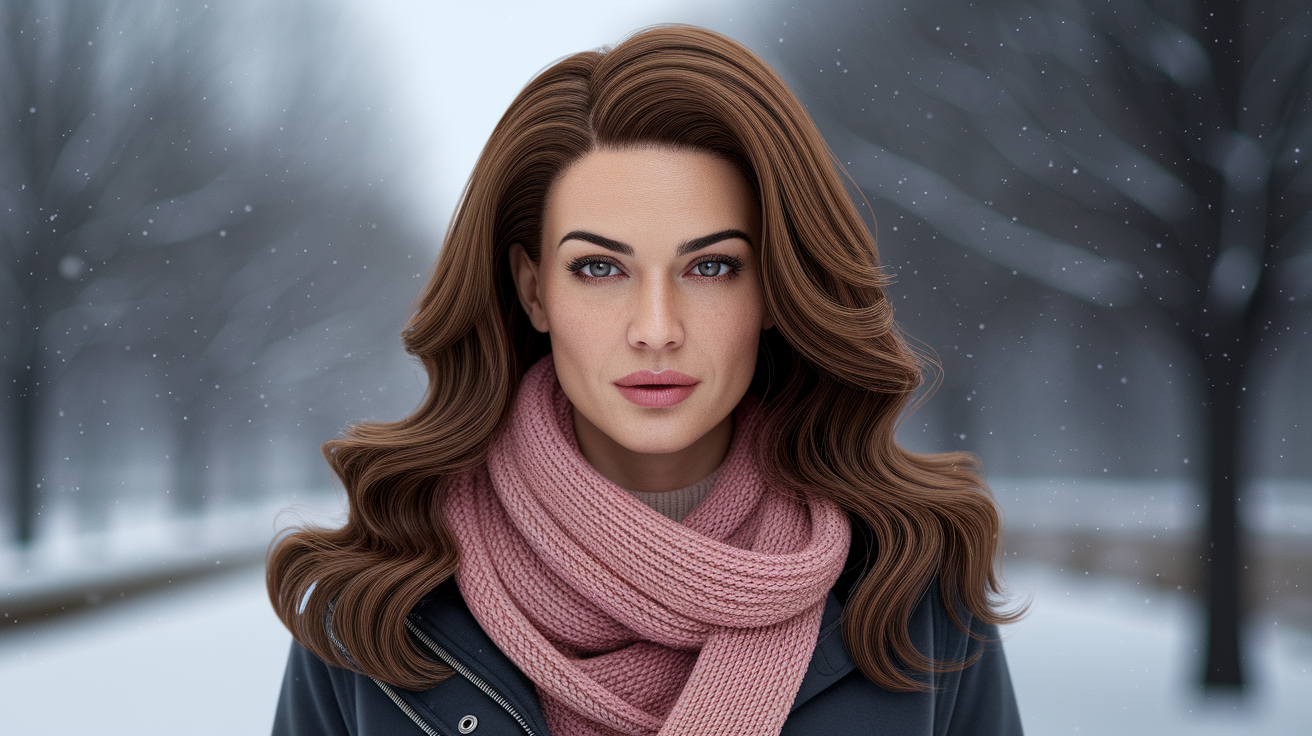
Here's what a brand palette (referred to as a color palette) is– the colors your brand uses on every touchpoint to display a consistent visual identity. It's a conscious decision, not a haphazard selection, and it directs design on screen, in print and on product.
Most palettes include three to four colors that work in harmony: a base color, one or two secondary colors, and a neutral. A nice split is 60% base, 30% secondary, 10% neutral. That straightforward rule assists teams scale color application in layouts, packaging and UI, so designs remain cohesive without guesswork.
Cohesive palette accelerates recognition. When individuals observe a particular color employed consistently, they establish an association in their mind between that color and the brand. Think the crisp red of an international soda brand or the rich blue of various finance apps.
Even if the logo is off-screen, those colors still signal who is talking. This compounding effect. A steady palette clears noise and focuses memory, that's why a quality palette tends to recall and trust. In my experience, I've found that when teams respect the palette on social posts, emails and slide decks, audiences perceive the brand as more trustworthy and transparent.
A palette connects so many pieces into a complete piece. It provides the logo with a steady platform, forms the web design's hierarchy, informs icon styles and establishes the mood for product shots and packaging.
For instance, a teal base might support the header, primary buttons, and box tops. Sand secondary can have hold subheads, cards and labels. A cool gray neutral can sit in the background, support body text, and just slice visual stress.
With this map, partners and vendors can get in sync quick, whether they print a poster or create a mobile screen. Good palettes mix feel with function. Colors are selected for their tone and effect as much as appearance.
Warm reds can imply excitement, tranquil blues can indicate loyalty, crisp greens commonly connect to wellness or the environment. Yet choice has to meet practical needs: enough contrast for legible text, tones that work in light and dark modes, and versions that reproduce well in print and on screens.
Offer codes for HEX and RGB for digital, and CMYK for print, so that your same hue shows true across formats. Maintain a brief style note illustrating primary, secondary and accent usage, and specify when to use each.
Test with actual mockups, measure contrast, and validate against universal accessibility guidelines. Care at this stage rewards in velocity, cohesion and brand power.
The best brown hair colors for winter
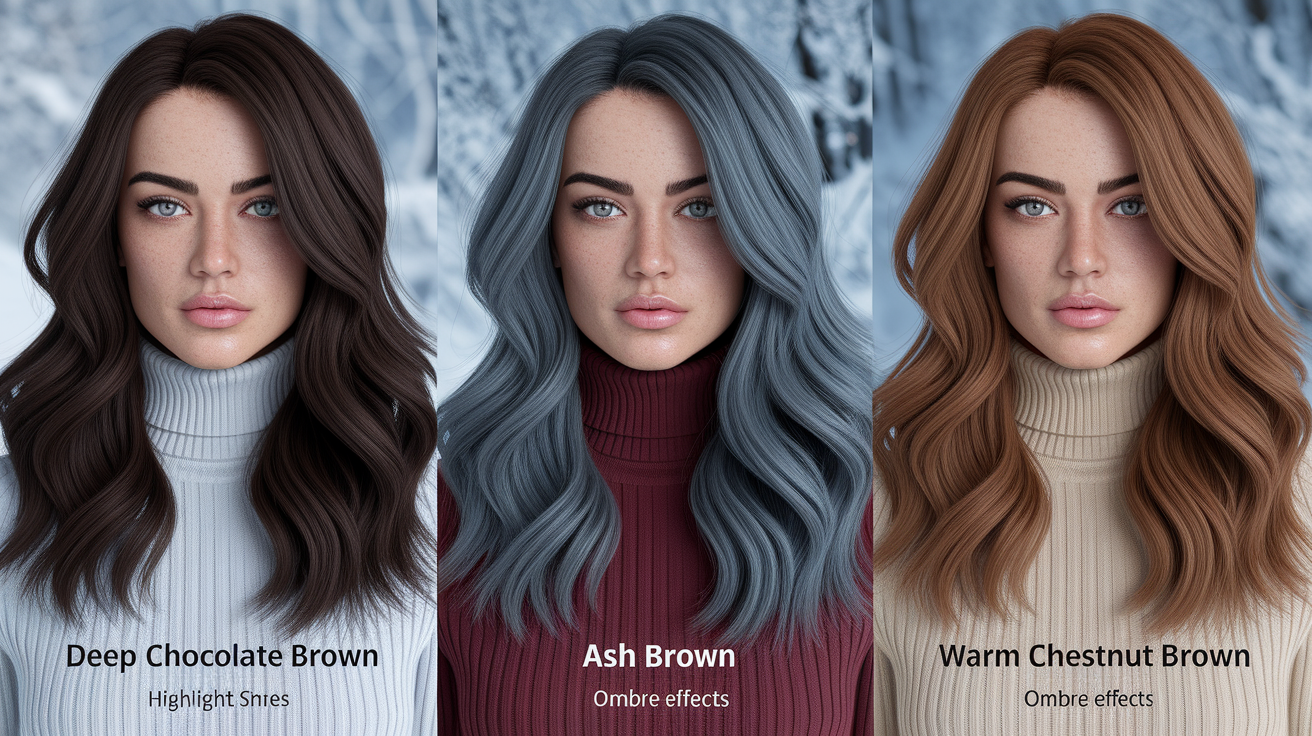
Brown shades appear richer in the low winter light, especially within the dark winter color palette. The goal is depth with control: cool-leaning tones for clarity, soft highlights for shape, and placement that respects your natural coloring. Deep winter palettes sparkle with saturated color and crisp contrast, where warm chestnut browns fare best as subtle highlighting.
1. Deep chocolate tones
Deep chocolate brown creates a smooth foundation that complements medium to deep complexions and shines during shorter days. It outlines your face with no shine and maintains the line sharp in photographs.
For added liveliness, intertwine fine red or wine undertones–a cherry or auburn whisper, not bold copper. It keeps things warm but sophisticated, particularly in indoor light.
Top picks: dark chocolate brown, mocha brown, and rich mahogany. Stay within 1–2 levels of your natural color for a more believable effect and simpler maintenance. If you lean Winter, opt for the cooler side of chocolate and steer clear of too warm or golden browns that can wash your contrast.
2. Cool ash browns
Ash brown provides a contemporary, muted finish that complements cool undertones and fair to light-medium complexions. It slices through brass, maintains a crisp silhouette, and compliments cool makeup.
Throw in some icy or light blonde highlights for Bright or True Winter harmony. Position them as fine ribbons or soft balayage to highlight bright without undoing dimension.
Ash tones neutralize unwanted warmth from previous color or sun, to keep you holding a fresh, cool edge through the season. Cool ash browns match high-contrast Winter palettes, supporting crispness while remaining natural.
Ash brown occupies the middle ground, so it's a Bright Winter sweet spot, looking balanced and not dark.
3. Warm chestnut hues
Chestnut gives brown a golden-red glow, a comforting choice for folks looking for warmth without the caramel. It compliments medium to deeper skin tones, maintaining a gentle glow in weak sun.
Throw in copper or caramel highlights for a vibrant, multi-tonal look. Take thin slices around the face and crown–ditch the thick panels that can throw brassy.
Chestnut plays nice when your undertone can take a little warmth. Winter types wear chestnut as tempered accents — over a cooler base — to avoid clash.
Chestnut is the go-to choice for a glowing, effortless transition from fall into winter, particularly in wavy cuts that flaunt dimension.
4. Rich espresso shades
Espresso is near-black, shiny and short–perfect for a crisp winter allure. It comes across as refined on straight or sleek cuts.
Pair with lighter skin for vivid contrast or with deep skin for a seamless, luxe look. Deep Winters flourish here, and can incorporate cool black lowlights for increased dimension.
Cool family all the way — warm espresso can appear flat beneath gray skies. Opt for this if you're after a statement-making, maximum-effect move with minimum bother.
5. Subtle bronde blends
Bronde mixes brown and blonde for gentle light-play that doesn't compromise winter richness. Add cool or neutral foils to maintain brightness without the yellow.
Strategically position gold or caramel nuances to simulate sun-kissed edges during the frigid season — primarily in mid-lengths and ends.
For Winters, keep highlights cool-tone and fine—balayage or micro-babylights—to preserve that signature contrast. For medium skin tones, bronde can be a soft connection between summer lift and winter depth, with easy maintainable grow-out.
Winters should go for rich brown bases with cool bronde overlays, steering clear of warm or medium dark gold browns that muffle their crispness.
Match your winter skin tone
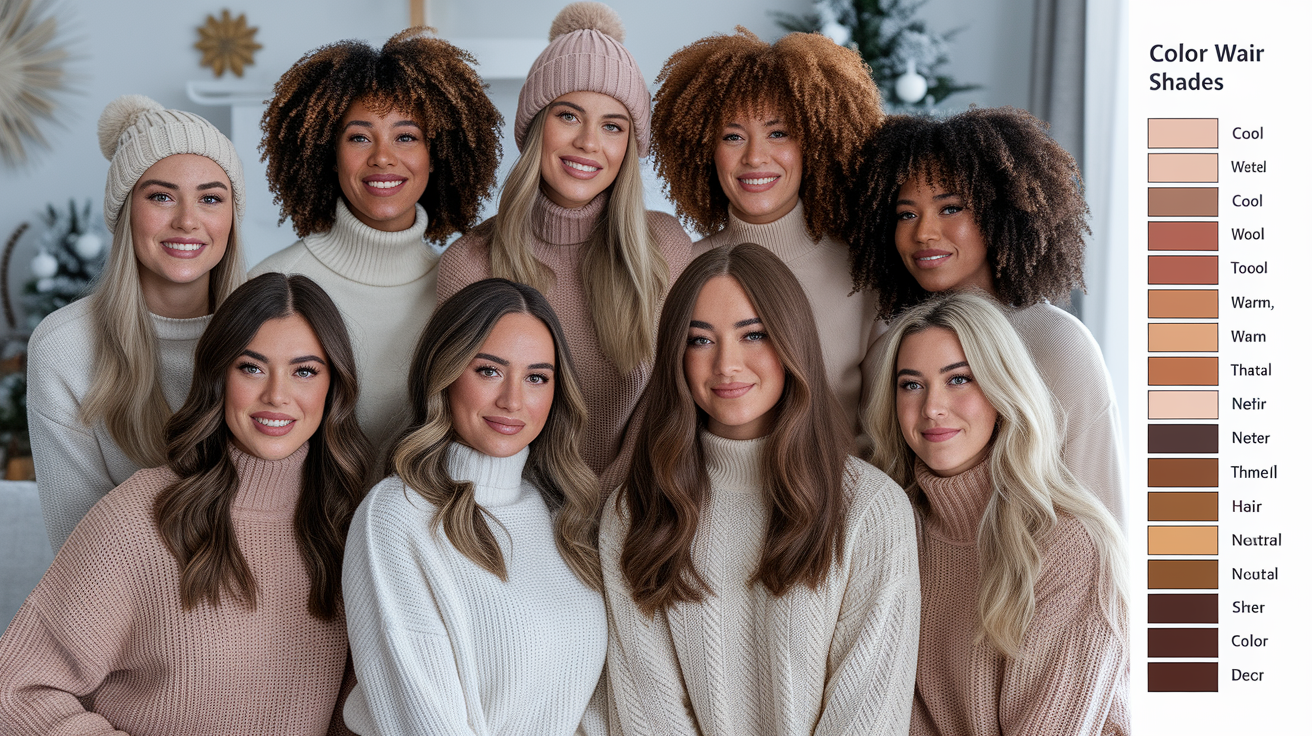
Select brown hues that resonate with your undertone and the Winter palette's cool, punchy mood. Winters read crisp: blue or pink undertones, deep and saturated colors, and the rare ability to wear stark black and white.
Start with undertone: try a vein test (blue/purple veins often point to cool), check how skin reacts to colors (icy pink vs. Peach), and note that online charts can miss nuances. If not sure, a pro color analysis aids.
Consider symmetry—hair matching your Winter skin tone tones enhances and grounds the overall appearance.
| Winter skin tone | Undertone | Ideal brown shades | Highlights/accents | What to avoid |
|---|---|---|---|---|
| Cool Winter | Cool, high contrast | Ash brown, cool taupe, iced brown | Blue-steel, silver, frosted espresso | Golden or brassy browns |
| Bright/Clear Winter | Cool, bright | Espresso, ink brown, smoked chocolate | Slate, ice beige, sapphire-tinted gloss | Muted, dusty browns |
| Deep Winter | Cool, deep | Bitter chocolate, dark walnut (cool) | Graphite lowlights, cobalt glaze | Warm chestnut, copper |
Cool undertones
Ashy brown, cool taupe and iced brown tame cool skin and prevent redness from flaring. These shades sit in the same temperature as your undertone, so your eyes read brighter and the whites look clearer.
Pass on golden, caramel and amber browns. Warm pigments can look sallow under indoor light and throw off Winter's cool backbone.
Layer in blue-hued or frosted lights–silvered mocha or slate ribbons, say–to create sharp dimension without warmth infiltrating. Stay intensely cool with a violet-blue toner every 4–6 weeks and a color-safe mask. This keeps the shade vibrant, in tune with the Winter palette that adores icy pinks, striking purple, blues and greens.
Warm undertones
Match your winter skin tone with warm chestnut, caramel brown and honey brown balayage that bring out golden or peachy skin for those low-sun months. Copper or toffee lights give lift near the face and read sun-kissed without reading orange.
Steer clear of ashy or grayish browns, which mute warmth and make skin appear flat. These warm browns enhance mid-winter glow under cool skies and gentle bulbs, particularly in combination with warm-gold jewelry and cocoa-inspired makeup.
Neutral undertones
Coffee, mocha latte, dark walnut (neutral-leaning), or beige brown provide balance and play nicely with eclectic wardrobes. Use them as a steady base, then test both sides: cool slate babylights or warm toffee veils to see which sharpens your features.
This is handy because the 4-seasons system is inflexible and we rarely fall neatly into one category. Observe your skin's reaction—if icy shades illuminate and monochromatic styles pop, you potentially tip Winter; if warmth complements more, make a mental note and tweak.
Brown can work for Winter when cool, bright accents meet its high contrast – watch Winters such as Naomi Campbell, Anne Hathaway, Lucy Liu, Helen Mirren, Catherine Zeta-Jones and Demi Moore ground richness with clarity.
Beyond the base color
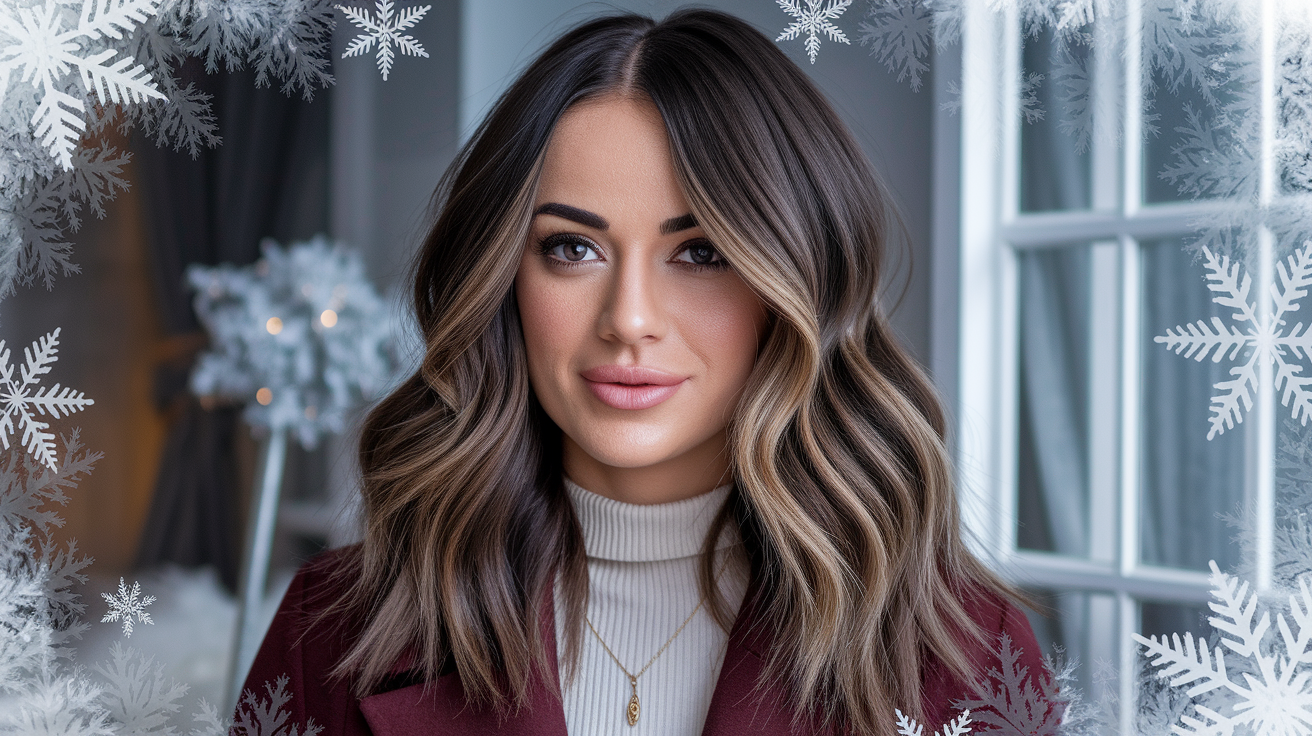
Winter brown glows when depth, movement, and light dance together. Above all, the undertone, with lowlights, balayage, and face-framing highlights, constructs a look that suits your flair, your skin tone, and the dark winter color palette. Bold, cool notes hit fresh in cold light, while warm glows soften. Lighter shades aren't just for summer; they work in winter when positioned thoughtfully in the winter color season.
- Popular enhancement options:
- Smoky/ash lowlights for sophisticated contrast.
- Honey, caramel, or gold highlights for warmth.
- Ash brown or cool bronde balayage, for that frosty vibe.
- Face-framing highlights in icy blonde, soft gold or beige.
- Red-gold dimensional ribbons so flattering on warm-toned skin.
Lowlights for depth
Darker lowlights create contrast that gives brown hair a rich, not flat, appearance. Concentrate them underneath the crown and through the mid-lengths to maintain shine on top, while casting shadow below. This trick is perfect for fine hair—the darker strands make roots appear denser and ends less translucent, so hair reads thicker.
For a sharp, polished edge, request smoky brown or ash gray lowlights positioned 2–3 cm apart. This cool cast is a great companion to wintery coats and crisp makeup lines, and makes friends with ash brown balayage if you're a fan of layered hues.
If you're looking for just a bit of a shift, lowlights embrace a subtle change rather than a full overhaul, and they grow out gently with little maintenance.
Balayage for dimension
Balayage paints light where the sun would hit, so warm and cool browns melt with no lines. Honey, caramel or bronde ribbons provide a sun-drenched lift that still reads brunette. Even when you throw in golden blonde touches, it stays brown, just brighter.
Opt for cool ash brown balayage for a winter-favorite tone that's crisp even in dim light. Or layer warm sun-kissed highlights over your base for a low-maintenance soft balayage look that doesn't require monthly refreshes.
Since balayage blurs the regrowth line, you can space salon visits further apart and maintain depth and movement. It's the ultimate winter pick-me-up for hair that feels vibrant, not striped.
Face-framing highlights
Light on the face makes skin glow and adds contrast quickly. Position 2-4 thin slices around the hairline, then dissolve them into the mid lengths so the impact remains subtle.
Select icy blonde for a crisp winter lift, soft gold for warmth or beige for a balmy, clean lift. Face-framing highlights are a classier version of stripey highlights, and pull attention in towards brows, eyes and cheekbones.
This works perfectly if you're looking for an understated but intense-hitting refresh that backgrounds both statements Winter Season ensembles and more traditional pieces. Dimensional tones with red and gold undertones flatter warm skin while maintaining a bright face.
Winter hair color care
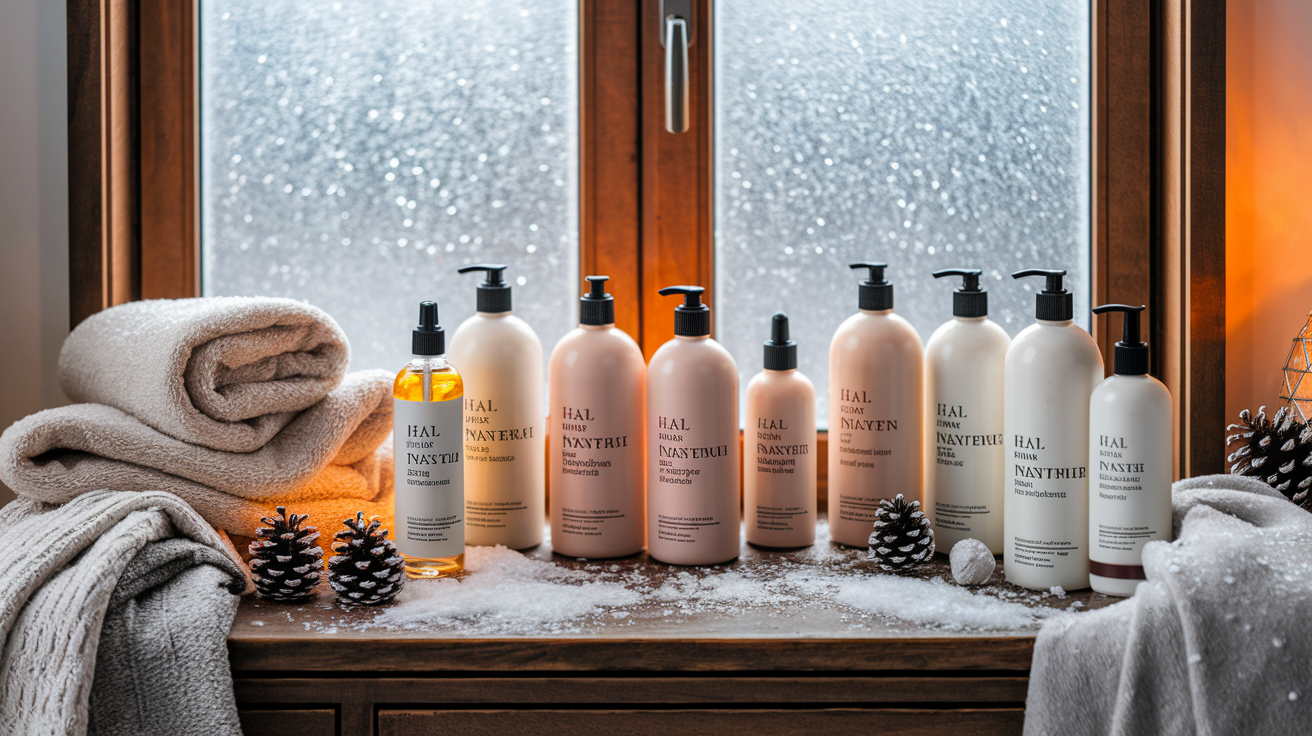
Dry winter air, low humidity, and indoor heat suck moisture from hair, dulling brunettes and accelerating fade. Hydration-focused, protection-centered, and strategically-timed refreshes keep cool, deep brown shades crisp and rich, while maintaining soft highlights that enhance the overall dark winter color palette.
Hydration is key
Deep condition once or twice a week to reconstruct the lipid layer that colored hair loses in winter. Concentrate on masks with ceramides, amino acids, and oils like argan or marula—they seal raised cuticles and shrink breakage on the cool, deep shades loved by the dark winter color palette, including Dark Winter, True Winter, and Bright Winter.
Sulfate-free, moisturizing shampoo and conditioner are essential to reduce color loss. Look for mild surfactants, low (below 6) pH, and ingredients like glycerin and aloe. This keeps cool, deep tones vibrant, regardless if your shade is a level darker or falls in the 1–2 levels that the winter color season wears best.
For extra protection, use a leave-in cream or oil, mid-lengths to ends, while hair is still damp. Pea-sized doses lock in moisture and enhance shine on the deep, crisp browns that frame winter looks, especially those flattering shades from the dark winter color palette.
Include a once-a-week moisture mask for porous or highlighted strands. Fine, cool highlights or balayage through dark hair add movement but require additional moisture-binding TLC to avoid feeling coarse.
Protect from heat
Slash hot tools to put the brakes on fading and prevent dryness from spiraling. Even little shifts—less blowouts a week—make brunette pigment stretch further.
Don't forget to spritz heat protectant before blow-drying, curling, or straightening. Target those up to 200–230°C to protect the cuticle on cool, deep shades.
Turn down the heat. Fine hair often styles at 150–170°C. Medium or coarse hair at 170–190°C. Lower temps save color-treated ends and prevent cool tones from becoming flat.
Experiment with air-dry days or heatless styling. A loose braid, foam rollers or a satin scarf set creates heatless shape, maintaining volume in subtle blond strands that provide dimension.
Refresh your color
Schedule touch-ups every 6–8 weeks to preserve rich shine, particularly if you stay within 1–2 levels of your natural depth. This maintains the dramatic contrast so many Winters depend upon.
Employ color-depositing conditioner or a clear/ash gloss every 2–4 weeks in between salon visits. Select cool, neutral browns so as not to add warmth — this works most effectively for True and Bright Winter.
Wash less—2 to 3 times per week with cool water. Over-washing takes tone quick.
If the cool browns tip brassy, pop a blue or purple shampoo once a week. Blue neutralizes orange in medium to dark browns. Purple soothes yellow on fine, cool highlights.
Complement your winter style
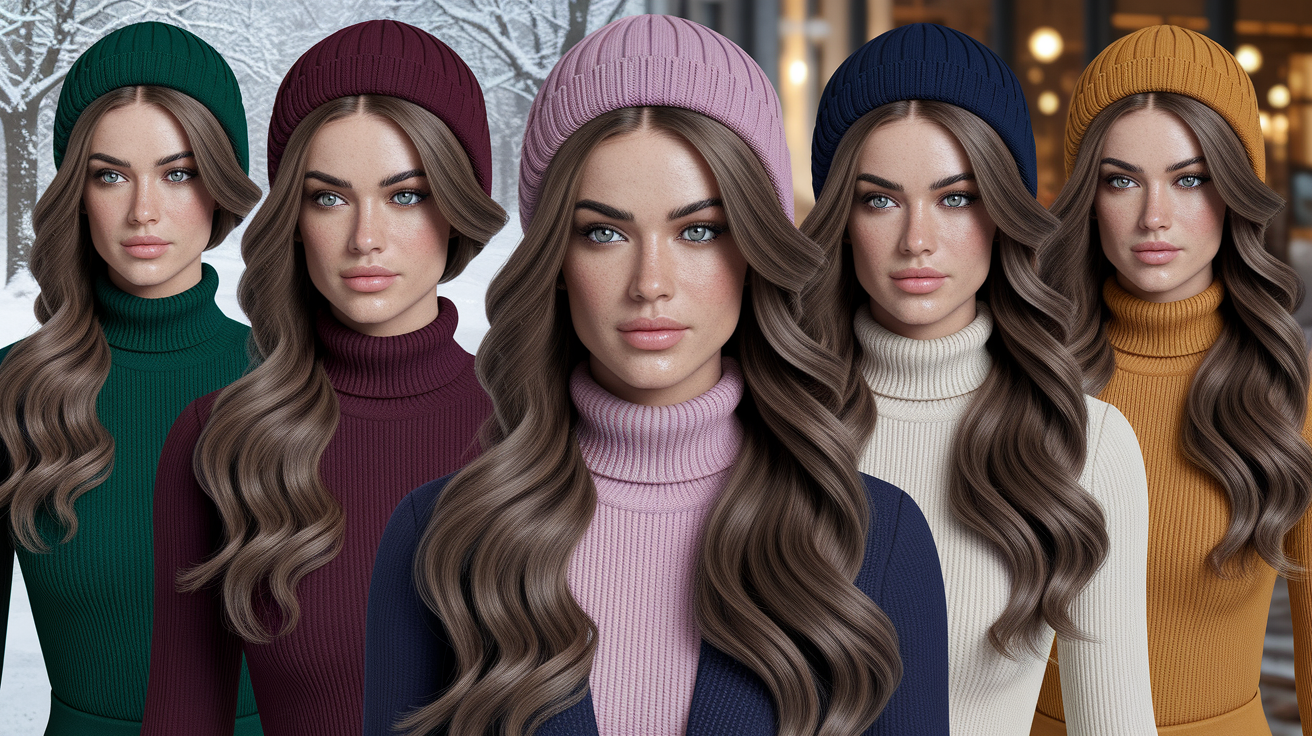
Brown hair in winter looks good when it aligns with your outfit, your hairstyle, and the tones you wear near your face. Cool, saturated, deep and vivid tones perform the most in cool light, reflecting the sharpness of a snowy landscape and providing distinct shadow. The dark winter color palette truly enhances the overall appearance of your style.
Match your hair with essentials. A chic espresso bob pairs perfectly with a black wool coat, a charcoal blazer, or a midnight-blue puffer. Soft ash brown complements winter whites, steel grey, and cool taupe knits. For darker shades like jet brown or blue-black, lean into high-contrast layers: a white turtleneck under a black jacket makes the hair shade look richer and the skin look brighter, especially when using the dark winter color characteristics.
If you subscribe to seasonal color analysis, many "Winters" have cool undertones (blue or pink) and wear cool, deep, vivid colors best. Black and white are powerful on Winters, whereas earth tones—golden browns, muddy greens and oranges—mattify the skin and battle with cool undertones.
Let accessories and makeup mimic that cool edge. Jewel tones—sapphire, ruby, emerald, amethyst—accentuate brown hair without hijacking attention. Wrap a sapphire scarf close to the collar to really make those ash highlights pop. Top off toasty espresso with an emerald beanie for a fabulous look that complements your dark winter palette.
For makeup, think balance and clarity: a cool berry lip, a soft rose-mauve blush, and charcoal liner bring out eyes that may read green, hazel, or brown with a grey cast. If you think you're a Winter, do the vein test on your wrist — if they appear blue or purple, cool undertones likely run through your complexion.
Pair that with cool-toned hair colors like jet black, cool espresso, or blue-black to emphasize high-contrast features. Let the color take center stage with easy, sleek hair styles. Loose, glossy waves catch light on mid-lengths, perfect for chestnut or ash brown with fine highlights.
A slicked low ponytail paired with a tailored coat appears refined and highlights a chocolatey, frosty brown. A center-part braid with a plum or teal satin ribbon supplies a crisp line around the face. Keep shine high: use a light serum on ends, and switch to a hydrating mask once a week in dry air.
A cool-tone gloss every 6–8 weeks keeps brass at bay and maintains that fresh winter vibe, ensuring your hair looks stunning throughout the winter color season.
- Cool espresso: black, white, charcoal, navy, cobalt.
- Ash brown: winter white, slate, pewter, soft navy, burgundy.
- Jet black or blue-black: pure white, ink, icy pink, ruby, emerald.
- Classic chestnut (cool-leaning): navy, wine, forest teal, steel, icy blue.
- Dark mocha: black, graphite, royal purple, sapphire, cool beige.
Conclusion
To sum it up, browns are easy winter colors. Cool ash brown imparts a fresh, satin finish appearance. Warm chestnut, which throws soft light and looks sumptuous in feeble sun. Mocha comes across deep and sleek. Soft cocoa gives a chill feeling. Within each shade can shift in tone, depth, and shine.
For your fit, start small. Test a gloss in a cool or warm brown. Accentuate face-frame lights. See how it interacts with your coat, scarf, and everyday light. Maintain strength with hydrating masks, low heat and UV care. Easy color-saving tips keep color fresh.
Need assistance to select a color? Leave your skin tone, eye color and style tips. I can recommend 3 shades + a care plan you can implement today.
Frequently Asked Questions
What brown hair shades look best for winter?
Rich warm tones glow in the winter color season. Opt for chocolate brown, chestnut, espresso, or mocha, and consider adding some caramel or toffee highlights to enhance your dark winter color palette.
How do I choose a winter brown for my skin tone?
Match tone to undertone for the ideal hair colors. Cool skin looks best in ash or espresso browns, while warm skin pairs well with chestnut or golden brown from the dark winter color palette.
Will brown hair make my winter skin look dull?
Not if you dimensionally add. Go for multi-tone highlights or lowlights using a dark winter color palette. With face-framing caramel for warmth, or cool taupe to balance, gloss treatments add shine and ward off dullness.
Can I go from blonde to brown in winter without damage?
Yes, with a strategy, especially for dark winter clients. Request a filler step to avoid muddy tones, opting for demi-permanent color and deep conditioning, with appointments timed 6–8 weeks apart.
How do I maintain brown hair color in cold weather?
To maintain your dark winter hair color, use sulfate-free shampoo, cool water, and weekly masks. Consider a color-depositing conditioner to enhance your dark winter color palette and shield hair from heat with a thermal spray.
What highlight style works with winter brown shades?
Go light with a dark winter color palette. Opt for balayage or fine babylights in flattering shades two shades lighter. Concentrate around the face and mid-lengths for a pop that complements soft winter light.
How often should I refresh brown color in winter?
Revamp every 6–8 weeks! A gloss or toner every 4–6 weeks maintains balance in warmth and shine, especially for those with dark winter hair color and deep winter palettes. Cut dry ends every 8–10 weeks to keep a crisp look.